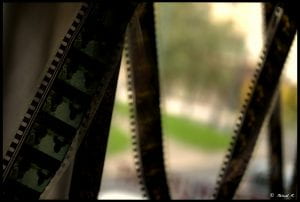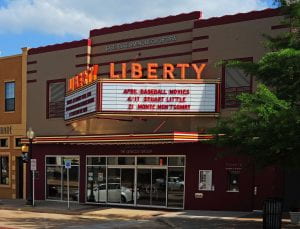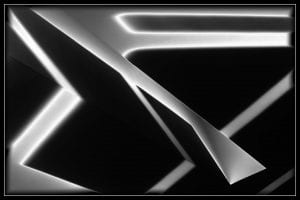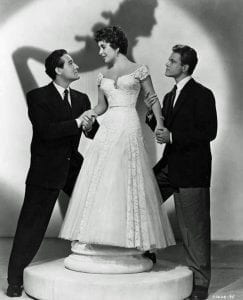2000 Onwards: Film Moves Full Circle – and the Future of Movies.

- Swiss Miss (1938) dir. John G. Blystone and Hal Roach – Utilizes a studio set and a painted background. Shows the one true question within film “Something is going to go wrong, but what?”. This films’ answer was a monkey.
- Blonde Venus (1932) dir. Josef von Sternberg – Utilizes a diffusion filter. A very absurd film.
- Employees Leaving the Lumiere Factory (1895) (introduced in Episode 1) dir. Louis Lumière – Movies started with this documentary. Filmed square on.
- Fahrenheit 9/11 (2004) dir. Michael Moore – Showed that reality can be dramatic. One of the first hit documentaries. Took over $250 million in the box office.
- The Bourne Supremacy (2004) dir. Paul Greengrass – Tries to be a documentary. Also made $250 million at the box office. Images were rough. Footage was heavily/speedily cut.
- Être et avoir (2002) dir. Nicolas Philibert – Observational. Camera at child’s height. Tilts up to capture sadness. Shows a vivid human being.
- Zidane – A Portrait in the 21st Century (2006) dir. Douglas Gordon and Philippe Parreno – Utilized extra long lenses to film a football match, but to capture the presence of one person. Thoughts were subtitled, even if not said out loud. Utilizes zooming.
- The Assassination of Jesse James by the Coward Robert Ford (2007) dir. Andrew Dominik – Wasn’t only in documentaries where reality bounced back. Utilizes Sepia, and defocuses the edge of the screen.
- Way Down East (1920) (introduced in Episode 1) dir. D. W. Griffith – Softly lit. Similar to that of a scene in “The Assassination of Jesse James”.
- Climates (2006) dir. Nuri Bilge Ceylan – Shows an intimate scene. Shot digitally. Utilizes a shot of sad eyes, out of focus, half cut off. No dialogue, or music. Doesn’t directly display what’s happening.
- The Death of Mr. Lazarescu (2005) dir. Cristi Puiu – New Romanian cinema. Utilized camera as if it were handheld, fluorescent lighting, used to show indecency.
- The Headless Woman (2008) dir. Lucrecia Martel – Boldly confronted reality. Usually, car accidents are filmed very violently/action heavy, yet in this film, it’s all in one camera angle, in the interior, showing the person behind the wheel. Static camera, shallow focus. Shows it’s tone with one scene. One the driver leaves, the camera doesn’t follow, it just stays in the interior. Shows isolation.
- Battle in Heaven (2005) dir. Carlos Reygadas –
- Oasis (2002) dir. Lee Chang-Dong – Shows the man who’s talking out of focus.
- Memories of Murder (2003) dir. Bong Joon-ho – A true story. Flat, deserted yellow land. Also utilizes a POV camera. Shows a simply shot conversation.
- Oldboy (2003) dir. Park Chan-wook – More transgressive. Shows a dark stylized world. Based on another work of fiction. Shows an action scene in a unique camera angle, as if the wall in front of us has been removed, only showing what’s behind the long corridor. Shot is far back, as if shot like a cartoon.
- Le Voyage dans la lune (1902) (introduced in Episode 1) dir. Georges Méliès(Although Mark Cousins and the title on the screen indicate that the scene being shown is from La lune à un mètre, the scene is actually from Le Voyage dans la lune. – One of the first science fiction movies. Extremely dream-like.
- Mulholland Dr. (2001) dir. David Lynch – Shows a dance scene, with a pure purple background, with shadows. Shows a moment of innocence. Shows layers. Shows a cafe scene. Has a shock, showing a monster of terror, as if handheld camera. Heavily plays with light. It was similar of that to the “Wizard of Oz”, with a noir layer attached to it.
- Requiem for a Dream (2000) dir. Darren Aronofsky – A great distortion movie about how drugs distort the world. The world is distorted by speeding it up, by applying a lens. Shows paranoia.
- Songs from the Second Floor (2000) dir. Roy Andersson – Color is a drab green, then turns heightened, as if a musical fantasy. Ending shows symbols of religion. All in one camera angle.
- Way Out West (1937) dir. James W. Horne – Andresson is a fan of this. The simplicity of shots, square on, symmetrical.
- Indiscreet (1958) (introduced in Episode 5) dir. Stanley Donen – Shows how a man utilized split screen to get around censorship.
- Rules of Attraction (2002) dir. Roger Avary – Also utilizes split screen. However, each screen is an actor, so the actors are looking into camera, as into each other. Feels as if we’re in the middle of the situation. The cameras then pan, combining into one image, showing both actors. We go from inside the moment, into an outside perspective.
- Avatar (2009) dir. James Cameron – Shows how computer generation can be heavily utilized. Utilizes a flowing camera. Everything was animated in computers, except the most important thing. Facial expressions.
- Motion Capture Mirrors Emotion (2009) dir. Jorge Ribas – Shows how Avatar was made, shows how people create motion capture, and digital camera. Shows multiple camera angles. Especially split screens. Shows 21st century cinema.
- Tropical Malady (2004) dir. Apichatpong Weerasethakul – Filmed in natural light, in long takes. Filmed in the summer. Backdrop is so still, it almost looks painted. However, halfway through, the film almost restarts. Scenes lit by moonlight. Films the spirit of animals. Shows life and death in the same image.
- Mother and Son (1997) dir. Alexander Sokurov – One of the defining movies in “Slow Cinema”. Derives from painting. Even stretches an image diagonally to change how the audience sees it.
- Russian Ark (2002) dir. Alexander Sokurov – The most inventive film “The Greatest Gorilla”. Camera is almost handheld, as if a person was the camera observing the people within the shot. Whole movie filmed in a single take. Not a single cut. Rehearsed for 6 months. Steadicam was so heavy, the cameraman almost collapsed.
- In One Breath: Alexander Sokurov’s Russian Ark (2003) dir. Knut Elstermann – Shows the ending after “Russian Ark” was filmed, shows how relieved everyone was, filmed with a handheld. Fully captures relief, and shows tears of joy.
Epilogue the Year 2046
- Inception (2010) (introduced in Episode 4) dir. Christopher Nolan – Innovative sci-fi, could be a metaphor about how film could be. Colors are greens and blue. Has shots with no sound. Relies on dreams within dreams. Cameras and film color gradings change throughout each sequence.
- Eternal Sunshine of the Spotless Mind (2004) dir. Michel Gondry – Shows memories within the film. Camera turns into a horror-like film. With a flashlight attached to the camera.
- Even the documentary itself shifts into a horror-esque theme, with the chiming sounds in the background, “horror-like” sound effects, sharp cuts, tone of voice changes, etc. Ends the shot with a tribute to film.








